General Bindery
Perfect Binding
Perfect binding is a widely used technique for binding paperback books, magazines, and other printed materials. It involves the creation of a strong and durable adhesive bond between the pages and the cover, resulting in a professional-looking finished product.
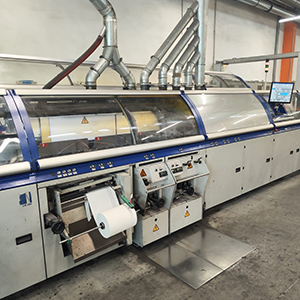
Inserting
Automatic High-Speed Inserting
An automated, highly-scalable method of inserting one or more printed mail pieces into another, such as flyers into a newspaper or magazine. We have the production capacity for thousands or millions of pieces per run.
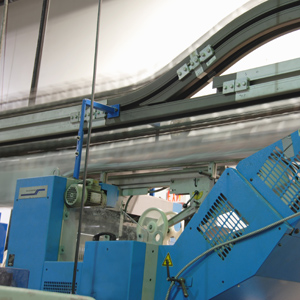
Folding
Folding / Parallel Folding / Quarter Folding
There are many ways a printed piece of paper can be folded, some of the more common methods are:
- Half fold / single fold
- Tri-fold / letter fold
- Z-fold
- Gate fold / window fold
- Double gate fold
- Double parallel fold
- French fold / right angle fold / quarter fold, folding first in half horizontally, then again vertically
- Roll fold, panels roll onto each other like a spiral
- Accordion / zigzag fold
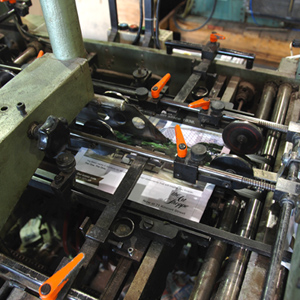
Stitching
Saddle Stitching
Commonly used for small magazines, catalogues, newsletters and multi-page brochures, this process involves inserting printed pages one on top of another and stitching them together through the folded spine.
Corner Stitching
Driving staples into a single corner of a set of pages.
Side Stitching
Binding several single pages together by driving staples into edges of the material, parallel to the bound edge.
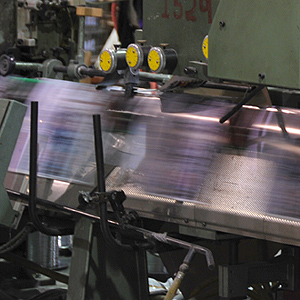
Binding
Wire-O Binding
A type of coil binding where a double set of wire loops are inserted into holes along the binding edge of a set of pages. There are many color options to choose from. Wire-o binding is also a great way to combine different mixed paper stocks into one finished product.
Plastic Coil Binding
Also known as spiral wire binding, it's a process by which plastic wire is wound or threaded into punched holes to bind a set of pages together.
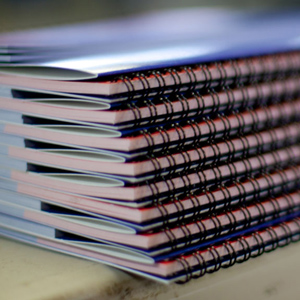
Cutting
General Cutting
Cutting involves removal of extra material from the edges of a print job so that the size of the material matches the finished measurement of the job. Most projects require cutting in one form or another.
Round Cornering
Punching rounded corners into a material using a die. Common sizes include 1/8", 3/8" and 5/8" radius corners. Round cornering helps to differentiate your printed piece from the standard square cut finish.
Die Cutting
A metal die that is fabricated and etched with a particular pattern. The die is mounted onto a machine that is then able to cut that pattern into a substrate, usually a flyer or other printed piece. Different metals can be used to create the die such as aluminum, brass and steel.
3 Knife Trimming
The process of cutting all three unfinished edges at the same time, typically used for pasted books or magazines.


Other Bindery
Drilling
Single or multiple holes can be drilled into a variety of paper stock. A special paper drilling machine is generally used for semi or fully automated drilling projects. Usually drilling is part of a larger set of bindery services performed together, but it's available as a stand-alone service as well.
Collating
A process by which stacks of separate inserts are assembled in a particular order to form a set before being sent for further processing.
Specialty Work / Hand Assembly
When automated equipment cannot do the job and manual assembly of product is needed.
Kit Assembly
Assembling different pieces of advertising (Magazines, product samples, etc.) together to form a completed "kit".
